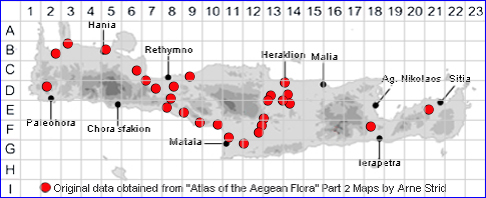
SPECIES DESCRIPTION
CERINTHE MAJOR
Family:- BORAGINACEAE
Common Name:- Honeywort, Goldendrop
Accepted Infraspecifics:- Cerinthe major subsp. major, Cerinthe major subsp.
oranensis. Cerinthe major subsp. purpurascens.
Meaning:- Cerinthe (Gr) Wax-flower.
Major (L) Large, greater, bigger.
General description:- Rather fleshy, grey-green, almost hairless (glabrescent)
short to medium annual.
Stems:-
a) 15-60 cm.
Leaves:-
a) all leaves covered with small, white, wart-like projections (tuberculate).
1) Lower:
a) oblong, broadest above the middle.
b) stalked (petiolate).
c) fringed with hairs along the margin (ciliate).
2) Upper:
a) oval.
b) clasping the stem with a heart-shaped (cordate) base.
Flowers:-
1) Bracts:
a) ovate, almost heart-shaped (subcordate) at the base.
b) equalling or longer than calyx.
c) often covered with a waxy reddish-bloom (glaucous).
2) Calyx-lobes:
a) acute.
b) ciliate.
3) Corolla:
a)15-30 x 5-8 mm.
b) slightly pouch-shaped (saccate), straight.
c) yellow, with a reddish-brown ring in the throat, sometimes cream distally, or
dark red throughout.
d) more than twice as long as calyx.
e) lobes, ovate, sharply recurved at the apex.
Fruit:-
1) Nutlets:
a) blackish.
Key features:-
1) Corolla 5-8 mm wide, more than twice as long as the calyx. straight, yellow or
dark red, usually with red spots or ring at the throat.
Habitat:- Cultivated, fallow and waste places, roadsides, stony slopes, field
margins, seasonally damp roadsides. 0-400(-800) m.
Distribution:- Widespread around the Mediterranean region eastwards to SW
Anatolia. but not the Balearic Is. or Cyprus. Somewhat limited distribution on Crete
mainly C and W.
Flowering time:- Mar-June.
Photos by:- Steve Lenton
